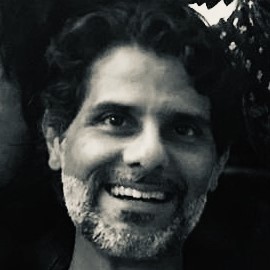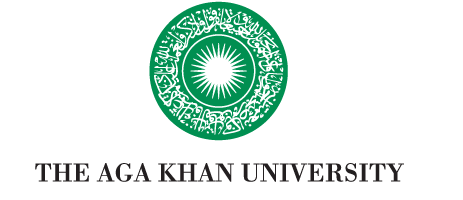Jacob
Adapted from the book "An Itinerant Observer" by Asad Mian
Jacob was baptized Jacob Shahid Masih at a consequential Catholic church in picturesque Murree.
“Your complete name does not roll off my tongue well,” I said to Jacob one day. Although I had become familiar with him by then, I was still a bit unsure as to what name he preferred to go by or by what religion, for that matter.
“You may call me Jay.” And hence Jay it was from then on.
Jay was the first male nurse that I had encountered in my medical career. I met him at a place close to Abbottabad, a famous military garrison town during the British Raj aka British Colonialism. While I was there that region was inconsequential to Pakistan and to the rest of the world. However, that quaint and somewhat sleepy town shot back to fame more recently after Osama Bin Laden was found there.
I was a final year medical student doing an elective rotation at a Christian Missionary Hospital in a small rural town tucked away among hills just a few miles north of the then-insignificant Abbottabad. The village where I spent five weeks likely did not exist on the map of Pakistan. At least I don’t recall finding it on the world atlas. That anonymity connected with the itinerant observer in me.
It was there, in my version of a no-man’s land, that I met Jay. I was twenty when I first met him and I believe he was older only by a few years. The name Jacob, or even Jay, for that matter, might have triggered the image of a white trekker in that mountainous region. However, Jay, the male nurse, was as desi (South Asian) in appearance as they came. He was a tall, dark-complexioned man perched on whose face was an immaculately clipped mustache. He would prefer to be in his shalwar kameez, when not in his work attire of white pants and white full-sleeved shirt. Overall he could have passed off for any Shahid on any street of Pakistan.
The most striking feature about his otherwise ordinary face was his exceedingly white teeth. Those, against the dark backdrop of his face, would have made you inquire about his dentist. Yet, he did not have one! He claimed that his teeth were white due to the sugarcane stem he would intermittently rub across them.
“Why do you do that?” I couldn’t stop myself from asking him.
“It’s a tradition of the Prophet.”
“Jesus?” I asked.
“Mohammed,” said he.
Jacob-Jay was an unusual person. And it was something in addition to his being a male nurse that piqued my interest.
“So why does your full name elicit two different religions?” I asked Jay.
“It’s somewhat easier living in Pakistan that way.”
He wouldn’t say much else. His answer, though non-committal, did not indicate much dissatisfaction about my asking him his religious affiliation. Over time I gathered that he was well versed not only in his own Catholicism, his birthright but also in mystic Islam. He would frequent nearby shrines to sing qawwali, Sufi devotional music. If asked, prior to being let into a mosque-like setting, he would offer his middle name— Shahid. He had learned ample music both in Punjabi and Urdu, and he would lend his voice to the troupe whenever needed. He loved that music, and I could tell when I heard him sing it. Being Catholic, by name and in faith, helped him maintain his job at the Missionary Hospital. So a multi-component name borrowing from different religious traditions was apparently empowering him.
“How come you are so comfortable in two different religions?” I asked him once.
“Does it matter whether you practice a single religion, more than one, or none? As long as you are doing God’s work it does not matter whether there is religion, or lack of it, in one’s day-to-day life.”
I assumed that by “God’s work” he meant nursing sick patients back to health. The hospital, although small and limited in medical personnel and equipment, housed a resourceful staff from all over the world. Surgeons, physicians, and nurses worked hard to heal the sick and wounded, irrespective of ability to pay.
I think God’s work, as alluded to by Jay, might have meant singing hymns, whether in a church or a shrine. It also meant trekking around the surrounding area to appreciate the beauty of the rugged terrain with its mountains, valleys, rivers, and lakes.
A few years later Jay called upon me while visiting Karachi. He recalled how I had asked him all those questions about religion.
“Were you seeking?” asked Jay.
“Maybe,” said I, after thinking for a few seconds.
 God, spirituality, and ‘oneness’ in various religions, nature, art and art forms, like singing and dancing, had become a familiar concept to me. I recalled how I used to attend daily chapel early in the morning, entirely of my own accord. I would stand next to Jay and sing hymns in Urdu and Punjabi extolling Jesus’ shepherding qualities. Knowing so in my heart it was okay to ‘indulge’ in other religions. That it was neither an anathema to nor a contamination of my own religion.
God, spirituality, and ‘oneness’ in various religions, nature, art and art forms, like singing and dancing, had become a familiar concept to me. I recalled how I used to attend daily chapel early in the morning, entirely of my own accord. I would stand next to Jay and sing hymns in Urdu and Punjabi extolling Jesus’ shepherding qualities. Knowing so in my heart it was okay to ‘indulge’ in other religions. That it was neither an anathema to nor a contamination of my own religion.
But what had left a deep impression on me was not the devotional singing. It was praying for the sick in the community, inside and outside the walls of the hospital, irrespective of religion, color, caste, language, gender, or age. It was praising the successes, small or large, of the hospital staff—the community members and their kids. Above all, it was about thankfulness to a universal God. And all that gratitude just prior to starting God’s work in the hospital certainly marred me for life—in a good way, I would like to think. I am glad that it did. My outlook on religion changed. I did not convert and yet I did.
I managed to articulate quite a bit of the above to Jay who approved.
“What’s your real religion, Jay?” I asked him the last time I saw him, almost two decades ago.
“To consistently work on improving myself,” said he. “That work entails a certain amount of morality, reality, creativity and imagination…all partly subjective, partly objective.”
I must have given him a blank look because he kept on talking.
“The bottom line, my friend, is simply that once you find your path then keeping to it makes for a heady ride. Imagination and creativity being elements of that ride.”
I was probably not at the same stage as he to fathom even that description of a real religion. So I let it pass.
Jacob-Jay Shahid Masih was like that—an unusual teacher who taught in a mighty unusual fashion.
DISCLAIMER: Copyright belongs to the author. This blog cannot be held responsible for events bearing overt resemblance to any actual occurrences. The views expressed do not necessarily reflect the views and policies of CCIT or AKU.
Acknowledgment: The author acknowledges Kamran Baig, a professional photographer and a BScN nursing graduate from AKU's SONAM, for providing the photograph above for this blog.
About the Author

Although a pediatrician, ER physician, and researcher by profession, Asad’s proclivity to writing is his means of creative exploration and expression. His articles on health, education, children, humor and popular culture have appeared in newspapers in the US and in Pakistan. Other than the Biloongra series of bilingual books for children, he has authored 'an itinerant observer' a book of short stories/essays published in the US.

